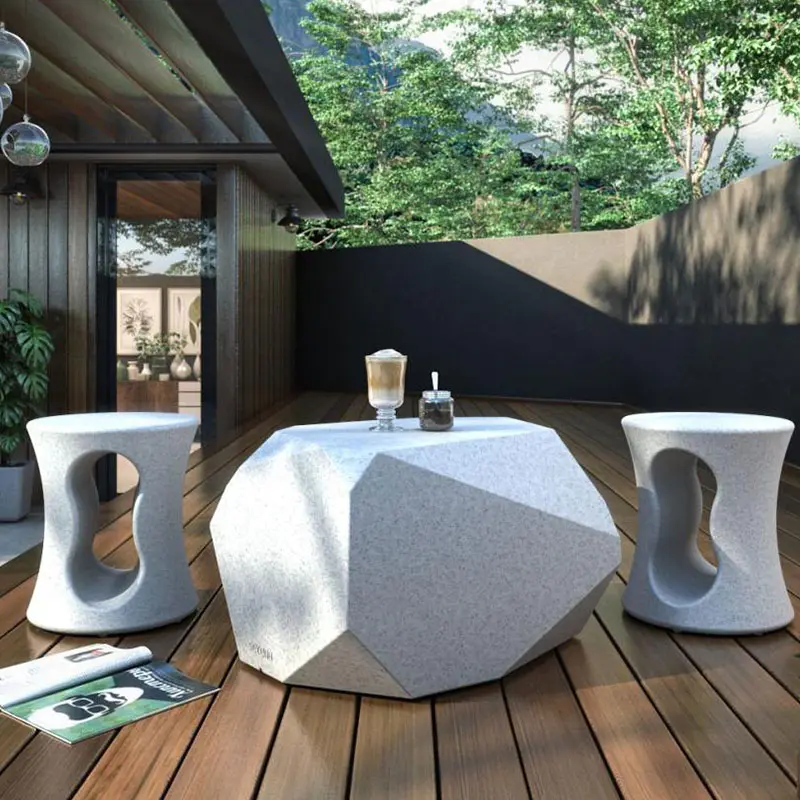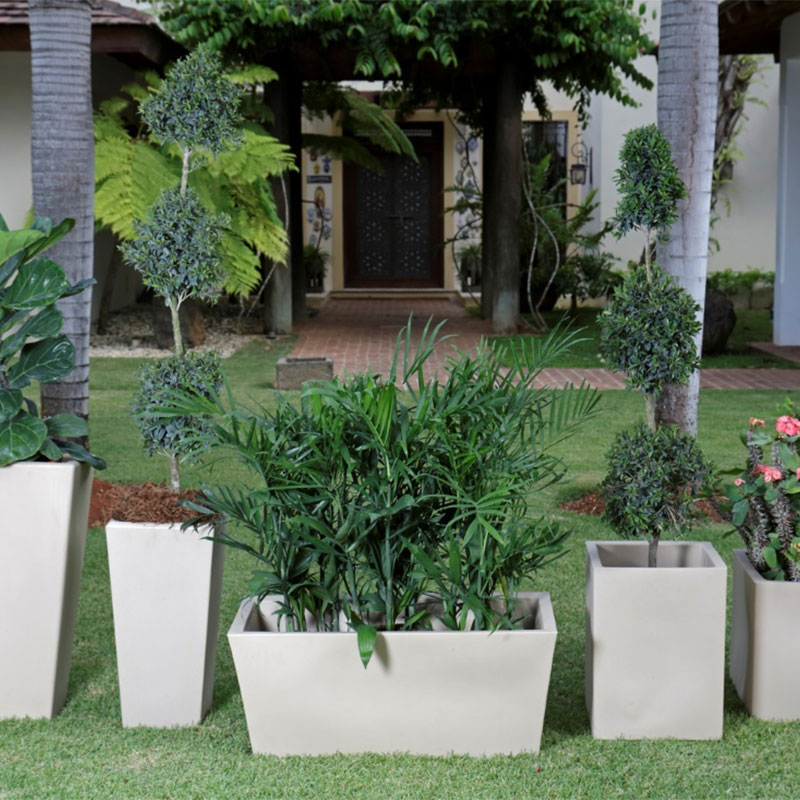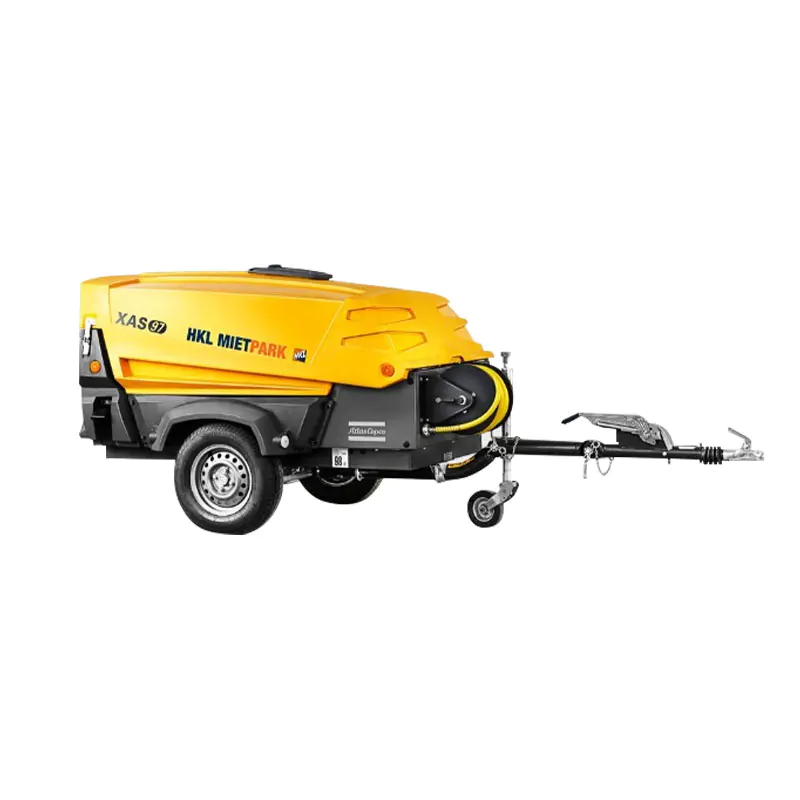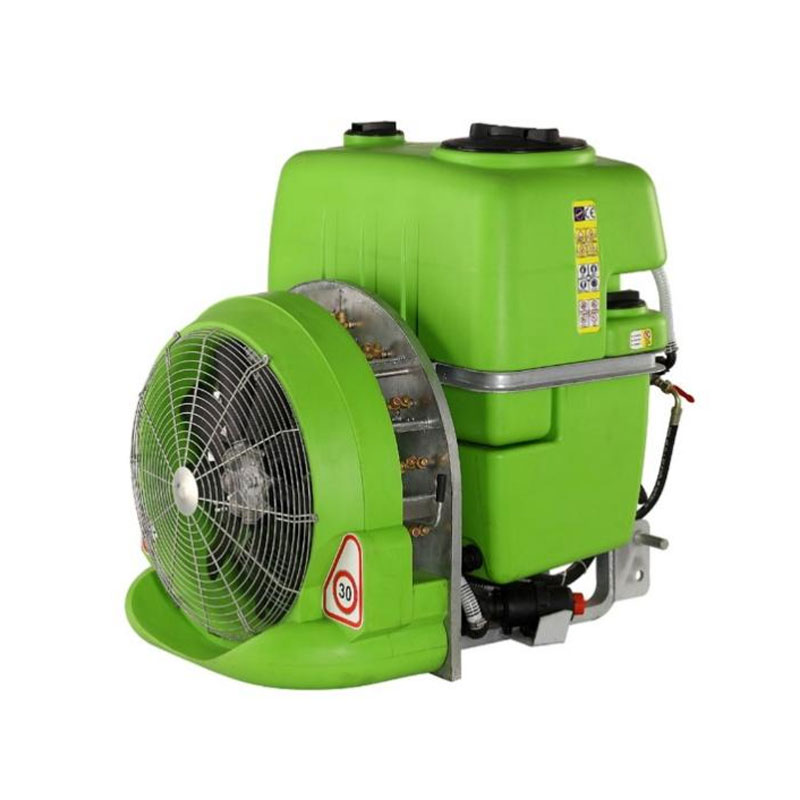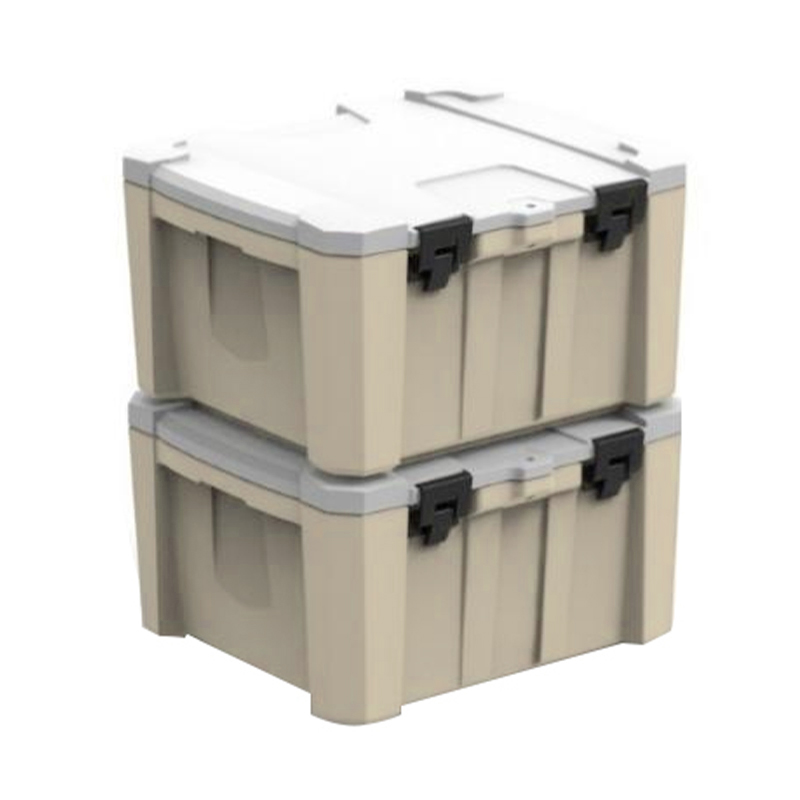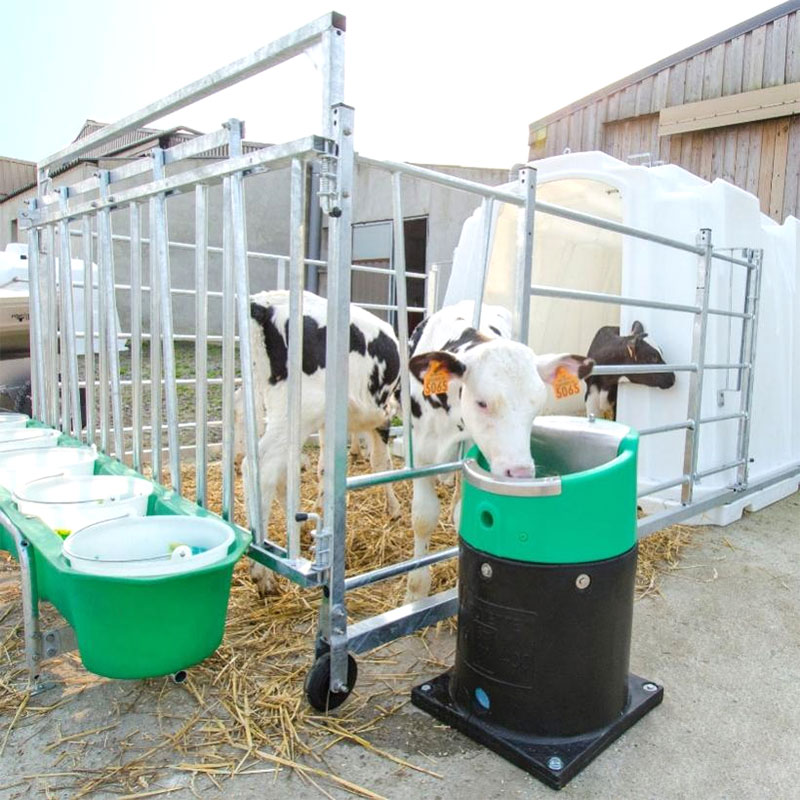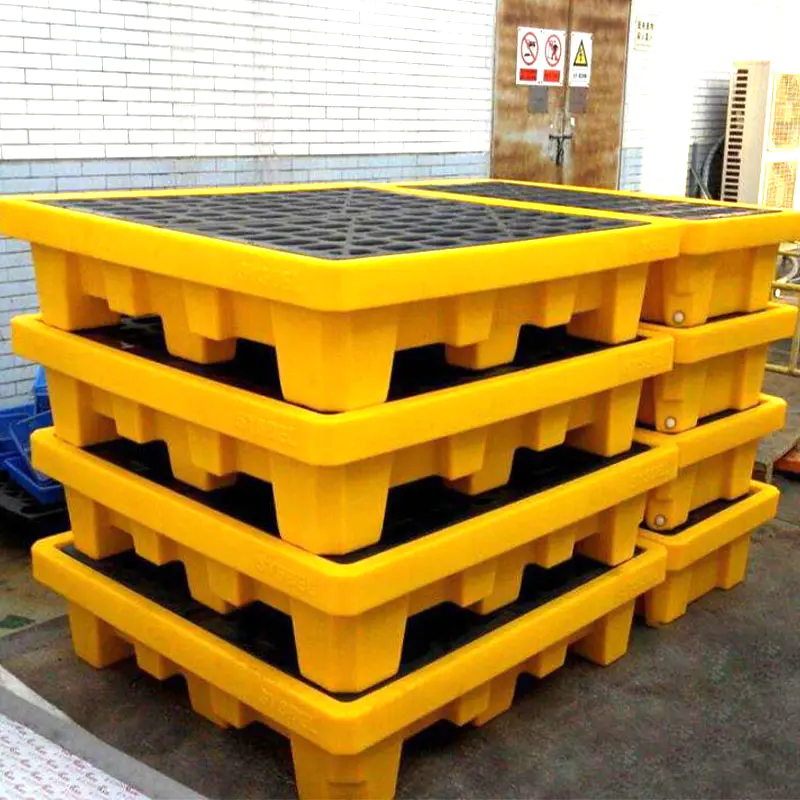In the production of modern plastic furniture, the rotational molding furniture mold plays a central role in determining the structural quality and surface appearance of finished products. This molding process, widely used for hollow or seamless furniture components, offers flexibility in design and durability. However, one of the recurring technical challenges manufacturers face is the appearance of air bubbles or voids in molded items. These imperfections not only compromise the mechanical strength and visual quality of furniture but can also signal deeper process inefficiencies or material issues.
Understanding the rotational molding furniture mold process
Before identifying the causes of air bubbles or voids, it is helpful to understand how a rotational molding furniture mold functions. The rotational molding process involves heating a hollow mold while it rotates biaxially, allowing plastic resin to melt and evenly coat the interior surface. As the mold continues to rotate during the cooling phase, the material solidifies into a uniform, seamless structure.
The rotational molding furniture mold typically produces large, hollow furniture parts such as chairs, tables, or decorative panels. Because the process relies on slow rotation and gradual heating, uniform temperature control and precise timing are vital. Any imbalance in these parameters may cause incomplete fusion, entrapped air, or irregular thickness—leading to bubbles or voids in the final furniture component.
Common manifestations of air bubbles and voids
Air bubbles and voids are often visible as small surface blisters, pinholes, or internal cavities within molded parts. In some cases, these defects are only noticeable after cutting or stress testing. The nature of the imperfection can reveal its underlying cause:
| Type of Defect | Description | Possible Indication |
|---|---|---|
| Surface bubbles | Small raised blisters on the exterior | Overheating or trapped air near the mold wall |
| Internal voids | Hollow regions inside the product | Incomplete melting or poor air evacuation |
| Pinholes | Tiny openings or pores | Moisture or volatile gas release |
| Uneven texture | Rough or inconsistent surface finish | Non-uniform temperature or poor resin flow |
Recognizing these forms helps technicians trace the problem back to the corresponding process parameter or material property.
Material-related causes of air bubbles and voids
Moisture content in the plastic resin
One of the most frequent causes of defects in a rotational molding furniture mold is moisture contamination in the raw resin. Plastic powders used in rotational molding are hygroscopic, meaning they can absorb moisture from the air. During heating, the absorbed water converts into vapor, creating bubbles within the molten polymer.
Proper drying of resin before use is therefore essential. Manufacturers often employ drying ovens or dehumidifiers to ensure the moisture level remains within the acceptable range. Failure to control humidity during material storage and handling can lead to persistent void formation, especially in thicker furniture components.
Poor material quality or contamination
Inconsistent or impure resin grades can cause uneven melting behavior. The presence of foreign particles, dust, or degraded polymer fragments can trap air and prevent uniform fusion. It is recommended to source high-quality rotational molding powder with controlled particle size distribution and stable thermal properties.
Additionally, mixing incompatible materials or pigments may cause localized overheating or incomplete melting, both of which encourage void formation.
Mold design and condition as contributing factors
Inadequate venting design
A well-designed rotational molding furniture mold includes vents to allow trapped air to escape during heating and rotation. Insufficient venting or clogged vent holes can prevent air evacuation, causing bubbles to remain trapped inside the mold cavity.
Technicians must regularly inspect and clean vent systems to ensure airflow remains unobstructed. In some cases, the use of improper vent plugs or seals can also alter the pressure balance inside the mold, increasing the risk of internal voids.
Poor mold surface condition
The surface finish of the mold directly affects the quality of the furniture product. Scratches, corrosion, or residue from release agents can create micro-gaps where air pockets form. Over time, repeated heating cycles can degrade mold coatings, leading to inconsistent release and gas entrapment.
Routine mold maintenance, including polishing and recoating, ensures smooth and even surfaces that support proper resin adhesion and air release.
Inaccurate mold alignment
If the mold halves do not close properly, air leaks can occur along the parting line. Even small misalignments in the rotational molding furniture mold can result in thin regions or incomplete fusion, where air becomes trapped and forms voids. Regular alignment checks and proper clamping pressure are crucial for maintaining sealing integrity.
Process parameter issues
Incorrect heating time or temperature
Temperature control is one of the most critical factors in rotational molding furniture mold performance. Insufficient heating prevents complete melting and fusion of resin particles, leaving unbonded regions that become voids. On the other hand, excessive heating can cause resin degradation, generating gases that appear as bubbles.
To minimize these risks, manufacturers must monitor the oven temperature profile closely and adjust rotation speed, dwell time, and heating rate according to the mold size and resin type. Consistency in thermal exposure ensures smooth material flow and bubble-free results.
Uneven rotation speed
The rotation speed and ratio between axes determine how evenly molten material distributes along the mold surface. Imbalanced or irregular rotation can cause thin-wall regions where air becomes trapped. For furniture components with complex shapes, fine-tuning the speed ratio helps maintain even coating thickness and prevents air pockets.
Improper cooling rate
Cooling too rapidly can lead to uneven solidification, trapping gases before they escape. Conversely, overly slow cooling can prolong exposure to air and increase the risk of oxidation. The key is to control cooling airflow or water spray uniformly around the rotational molding furniture mold. Proper cooling ensures dimensional stability and eliminates residual voids.
Operational and handling factors
Inconsistent powder loading
The amount and distribution of resin inside the rotational molding furniture mold have a direct impact on product integrity. Undercharging the mold leaves areas unfilled, while overcharging can restrict resin flow and trap air. Operators should measure resin quantities precisely and ensure even spreading across the mold before heating begins.
Poor pre-heating or uneven material distribution
If the resin is not evenly dispersed during the initial rotation phase, the melting process may start unevenly, allowing air to be trapped between powder layers. This issue is particularly common in large or deep molds used for furniture components. Optimizing the initial rotation and heating cycle helps achieve uniform coating and prevent early-stage voids.
Inadequate cleaning between cycles
Residue from previous production runs—such as leftover plastic, release agents, or dust—can disrupt the surface contact between resin and mold. These impurities become gas traps, leading to bubbles in subsequent cycles. Thorough cleaning and inspection of the rotational molding furniture mold after each use are essential maintenance practices.
Environmental conditions
Ambient humidity and temperature
Environmental control in the production area also affects product quality. High ambient humidity accelerates moisture absorption by plastic powder, while large temperature fluctuations can impact mold expansion and contraction. Implementing climate-controlled storage and production zones helps stabilize both material and mold performance, reducing bubble formation risks.
Airborne contaminants
Dust or particulate matter in the workshop environment can settle on open molds or powder surfaces, introducing potential nucleation sites for air pockets. Maintaining a clean, ventilated workspace reduces this source of contamination and ensures consistent product quality.
Inspection and quality control considerations
To maintain high production standards, systematic inspection of the rotational molding furniture mold and molded products is necessary. Quality control procedures often include:
- Visual inspection for surface defects or discoloration.
- Ultrasonic or X-ray testing to detect internal voids in thick furniture components.
- Dimensional measurement to confirm uniform wall thickness and proper mold filling.
- Material sampling to verify moisture and contamination levels before processing.
By integrating these checks into routine operations, manufacturers can identify and correct the root causes of air bubble formation early in the process.
Prevention strategies for air bubbles and voids
The prevention of air bubbles and voids in a rotational molding furniture mold requires a combination of material management, equipment maintenance, and process optimization. The following guidelines summarize effective practices:
| Key Area | Preventive Measure | Benefit |
|---|---|---|
| Material handling | Dry resin thoroughly and store in sealed containers | Prevents moisture-induced bubbles |
| Mold maintenance | Clean and polish regularly; inspect vents and seals | Improves air evacuation and surface quality |
| Heating control | Calibrate oven temperature and ensure consistent thermal cycles | Ensures full melting and fusion |
| Cooling process | Apply balanced and gradual cooling | Reduces stress and prevents gas entrapment |
| Operation management | Standardize loading quantity and rotation speed | Promotes uniform material distribution |
Implementing these preventive measures can greatly enhance the consistency and durability of molded furniture components.
The importance of continuous process monitoring
Modern manufacturing systems increasingly rely on process monitoring technology to maintain stability and quality during rotational molding. Sensors that measure mold temperature, internal air pressure, and rotational speed provide real-time feedback for adjustments. These tools help operators detect conditions that might lead to air entrapment or incomplete melting before defects occur.
Regular data analysis allows manufacturers to identify trends, such as gradual heating inefficiency or vent obstruction, and address them proactively. This approach not only minimizes waste but also improves production efficiency and product reliability.
Buyer perspectives and quality expectations
From a buyer’s standpoint, understanding how air bubbles or voids form in a rotational molding furniture mold is essential when assessing supplier quality. Buyers often prioritize surface smoothness, structural integrity, and long-term durability in furniture products. Consistent results indicate strong process control and equipment precision.
When evaluating suppliers, buyers may inquire about:
- The maintenance schedule for molds and equipment;
- Quality assurance procedures for defect detection;
- The manufacturer’s experience with complex mold geometries;
- Measures taken to control humidity and raw material storage.
Transparent communication between supplier and buyer fosters confidence and ensures that production standards align with performance expectations.
Emerging improvements in mold technology
Advancements in rotational molding furniture mold design and process automation are addressing many of the traditional challenges related to air bubbles and voids. Some notable improvements include:
- Enhanced venting systems with self-cleaning filters that reduce maintenance needs.
- Temperature sensors integrated into molds, enabling real-time thermal balance adjustments.
- Optimized powder flow designs that promote uniform coverage even in intricate shapes.
- Advanced coatings on mold surfaces that reduce adhesion and improve air release.
These innovations contribute to better product uniformity, reduced defect rates, and increased production efficiency, making rotational molding more competitive in the furniture industry.
Conclusion
Air bubbles and voids remain one of the most common and concerning issues in products made with a rotational molding furniture mold. These defects can originate from moisture contamination, poor mold venting, inconsistent heating, improper rotation speed, or inadequate maintenance. Addressing these root causes requires a balanced approach that includes material preparation, precise temperature management, mold inspection, and environmental control.
By applying systematic quality control and preventive measures, manufacturers can ensure that furniture products molded through this process meet the highest standards of strength, aesthetics, and reliability. For buyers and producers alike, mastering the relationship between process parameters and defect formation is key to optimizing outcomes and advancing the performance of rotational molding furniture mold technology.

 English
English 中文简体
中文简体 русский
русский Español
Español
